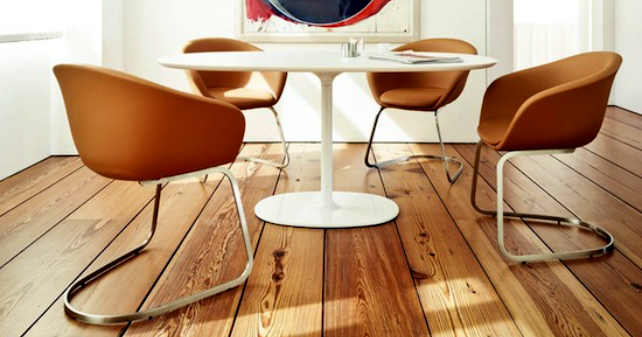
5 Tips for Choosing the Best Flooring for Your New Home
By Jo-Ann Capelaci on May 21, 2015
Recently, I have been scouring showrooms in the GTA choosing the finishes for a model home for Williamsberg Estates’ Anderson Enclave community in Pickering. In choosing finishes for your home, flooring is usually a good place to start. You can use the same process I use when choosing flooring for your new home.
These are 5 things you should consider when choosing flooring:
What is my preferred colour palette?
I typically pick a neutral palette for flooring such as greys, beiges or greige (grey/beige). When you choose neutral colours then you can decorate around them easily. You can add splashes of colour for impact with accent tile features, paint and accessories.
 Neutral palette with accents of colour in tile & accessories
Neutral palette with accents of colour in tile & accessories
What are the tasks performed in the room?
How the room will be used and what tasks will be performed is important to consider. If you want a floor that doesn’t take a lot of upkeep, choose tile or hardwood with some pattern to mask the dust and dirt.
 Picture from Sarana Showroom – A patterned tile for low maintenance
Picture from Sarana Showroom – A patterned tile for low maintenance
Who will use the room?
Hardwood flooring is a popular favourite for all rooms including the kitchen. Although hardwood installed in a kitchen is beautiful and easier to stand on for long periods of time, it may not be the best choice for busy families. It is important to pick up spills quickly and not let them settle under the wood. If your fridge or dishwasher should leak then you may need to replace your entire floor. Still, there is no denying the beauty of natural wood flooring. Think about your lifestyle and choose flooring accordingly.
 Natural wood for beauty and continuity
Natural wood for beauty and continuity
What size and what direction should I choose for the flooring?
A popular size for floor tile offered by many builders is 12”x24”. Typically, I specify the tile to mimic the shape of the room. This will accentuate the shape. If you want to create an illusion of width, you can run the tile in the opposite direction. You can stack tiles (so the grout joints line up) for a more contemporary look. A staggered or brick joint tends to fit best in traditional or transitional settings. Large tiles mean less grout. You don’t necessarily need a large room to install large tiles. Small tiles can make an impact, too! You can use small tile in powder rooms or inset into a floor to craft a rug effect.
With hardwood flooring, some builders require it to be installed perpendicular to the floor joists. If you have a choice in hardwood floor direction, think about where you want your eye to be directed. For example, you may want your gaze to be guided to the back of your home to the view of a great looking backyard.
 Pattern inset into tile to craft a rug effect
Pattern inset into tile to craft a rug effect
What am I willing to spend?
Obviously not all tile, hardwood and carpet is the same quality. In most cases, the higher the cost the higher the quality. Sizing typically increases the cost of tile and hardwood. You will pay more for wide width and long length hardwood boards. The thickness of the wood (wear level) can also affect pricing. If you love hardwood floor but your pocketbook won’t allow it, laminate flooring has come a long way in recent years.
With carpet, the fiber content and denseness of the pile determines the cost. If you can’t afford to upgrade your carpet I always recommend upgrading your under-pad to extend carpet life and to feel better underfoot.
If you like the look of a stone tile you may be able to substitute a porcelain tile in its place to save money on the tile and installation. Some porcelain tiles are so realistic now that even an expert can’t tell the difference once they are laid. And the best part is that porcelain tiles don’t require sealing every year. Porcelain tiles are more costly than ceramic, but worth the outlay.
Stacking tiles is always less expensive because less labour is involved and less tile is required. Generally speaking, hardwood and tile flooring is an element in your home that you seldom change, therefore, choose carefully and think of it as an investment in the enjoyment of your home for years to come.
 Porcelain tile – A great substitute to stone tile
Porcelain tile – A great substitute to stone tile
Stay tuned for future articles with helpful tips on designing and decorating your new home. And I’ll provide further information closer to the end of June on the Williamsberg Estates model opening. Perhaps you will want to visit Anderson Enclave in Pickering to see the flooring choices we made for the models.


